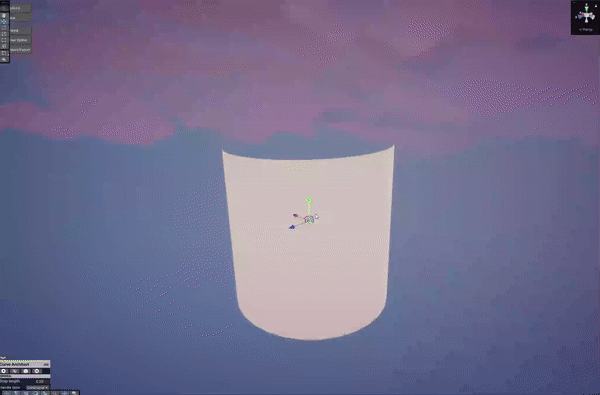An Interview with Tunic Lead Dev Andrew Shouldice

We included this information, plus more in our monthly newsletter. Sign up to get exciting Finji news right to your e-mail inbox!
Ghost VFX in Usual June

In October we showed off our newest ghost character, Frankie, so let’s dive into one of the most striking features of ghosts in Usual June: their hair plumes! That means it’s time to talk about the work of our talented VFX Artist, Eduardo Noé.
When crafting effects for various ghost characters, Eduardo faces the challenge of making them look cohesive, yet distinct from other effects in the game. For example, the team largely avoids using transparent effects in Usual June, so it is ghost characters alone that utilize a low-opacity material to achieve an ominous and smooth appearance. “For the hair plumes,” Eduardo says, “we aimed for a blend of smoky and fiery look. We wanted to make it look volumetric, with some sort of ‘flowing’ movement.”
Fun fact: these ghost plumes are basically cylinders and math!

Eduardo and the rest of the team have been hard at work bringing Usual June to life, and we can’t wait to keep showing you what they’ve been up to!
If there’s anything you want to see in future updates, let us know by joining the Finji Discord and posting in the Usual June channel.
And don’t forget to wishlist Usual June on Steam!
Andrew Shouldice on TUNIC: Design Works

Finji Community & Social Media Manager Aster Wright chatted with TUNIC creator Andrew Shouldice about TUNIC: Design Works from Lost in Cult, why thinking on paper is a part of his process, and what he hopes fans will take away from the book!
ASTER: TUNIC: Design Works is now available for pre-order from Lost in Cult, documenting the seven-year journey of creating TUNIC. Can you tell us a bit about the book and how you worked with them to bring it to life?
ANDREW: For a while now, author Christian Donlan and I have been having regular conversations. We’ve been talking about TUNIC: the reasons behind it, its development, and why there are so many secrets. It’s been a delight. Christian is incredibly insightful and really understands the core of TUNIC–I’m so lucky to be working with him. Over the course of development, I used lots of different organisational and note-taking tools. The one that I’ve used most consistently is good old-fashioned pen and paper. I have a big stack of notebooks representing my ideas, plans, failed experiments, and anxieties over the seven years it took to make the game. I’ve gone through all of it. When you leaf through the book, you’re going to see a cross-section of TUNIC’s development: extremely rough early sketches of areas, scrapped ideas, margin doodles, and lots and lots of to-do lists. One of my favourite things to find is the genesis of an idea destined to become a core part of the game: the first drawing of a slorm, the first description of the holy Cross, or the original mapping of the Golden Path.
ASTER: How much of your game design process is thinking on paper, and why is that a system that works for you?
ANDREW: There’s an immediacy to pen and paper that I really like. You don’t need to worry about its battery being charged. You don’t need to worry about installing the latest version. You don’t need to worry about it syncing correctly. So in one sense, pen and paper is very fast. In another sense, it slows me down just enough to make sure I’ve thought about what I’m writing. It’s really easy to open up a text editor and absolutely fill it with garbage. That’s often really useful, but sitting down with a fresh page in your notebook requires a deliberate act of beginning where the blank sheet becomes blank no more. I think about the creative process like a wheel or a gear. Sometimes it’s useful to spin the wheel as fast as you can, unengaged and flying free. Sometimes, however, the act of deliberate contemplation will take that wheel and embed its its teeth into the problem. Now the wheel can do work, and the writing process can begin.

ASTER: What are you hoping that fans of TUNIC will take away from TUNIC: Design Works?
ANDREW: In part, I hope people share in an experience I’ve been having while going through my old notes: being reminded that, more often than not, I have no idea what I’m doing. These kinds of notes exist as a path to a finished product. If I knew exactly what I needed to do from the very start there would be no notebooks. These pages represent exploration; an attempt to organize a chaotic mass of ideas into something actionable. So naturally, a lot of the ideas are dead ends, but not wasted time. They represent probing an avenue to confirm that it’s not quite right, and gaining a better understanding of what would be just right.
ASTER: You know I have to ask: are there any secrets to be found within the book’s pages?
ANDREW: I’ve never hidden a secret in my life!

Pre-orders for TUNIC: Design Works are available now! There’s also a gorgeous Deluxe Edition and a vinyl pressing of the original soundtrack by Lifeformed and Janice Kwan.